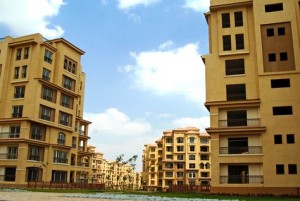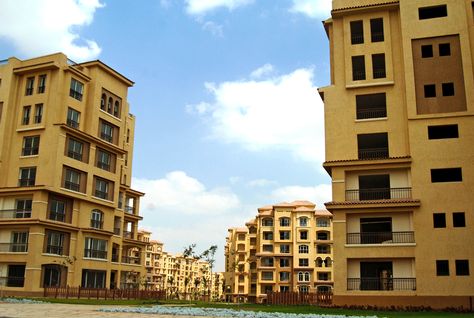
(AFP Photo)
The National Investment Bank (NIB) will finance public housing projects worth EGP 270m for the 2014/2015 fiscal year (FY) said Momtaz Al-Saeed, a member of the Bank’s Board of Directors.
EGP 65m will be allocated to social housing projects and EGP 200m to the General Authority for Construction and Housing Cooperation. A further EGP 5m will be given to the Ministry of Housing, according to a Presidential Decree.
The decree set loan interest rates at no more than 6%, with the bodies’ loans, as well as those of the Housing and Development Bank, to be given to individuals, said Saeed.
According to Saeed, allocations for public housing lending for FY 2014/2015 increased by approximately EGP 70m.
The State Treasury bears the interest difference, valued at 7%, while borrowers obtain loans at 6% and banks, 13%.
According to the general budget for FY 2014/2015, housing services, drinking water, and sanitation allocations amount to EGP 10.1bn. EGP 9.5bn has been earmarked for social housing projects and EGP 610m for developing slums.
“The increase in allocations for public housing lending represents capital shifts, as the banks obtain payments due for housing units by individuals,” said urban economy analyst Sayf Al-Din Farag.
Farag said that allocations for public housing lending for FY 2014/2015 are not a small amount, but should grow by approximately 10% annually.
According to Farag, banks benefit by obtaining the subsidy difference of 7% which is borne by the State Treasury.
Water and housing allocations for the FY 2014/2015 budget exceed EGP 10bn. Farag said that these allocations “must distinguish between areas with no access to drinking water and sanitation versus neighbourhoods that have existing systems and only require maintenance and renovations. The first type of area requires very large financial allocations.”
According to Farag, the slum development fund is not sufficiently large enough to achieve its objectives, despite its being increased by EGP 200m up to EGP 614m.
He added that 1,221 slum neighbourhoods are home to 35 million individuals in Egypt.
“Despite the establishment of a ministerial working group for slums handled by former Environment Minister Dr. Laila Iskandar within Mehleb’s government, the Ministry is still reviewing the situation,” Farag said.
Farag called on the current government to swiftly address the issue of unsafe slums, which represent 30% of all slum neighbourhoods, by involving civil society organisations and international financial institutions in the process.



